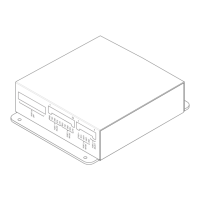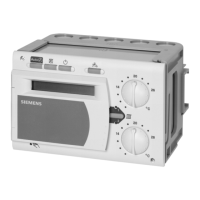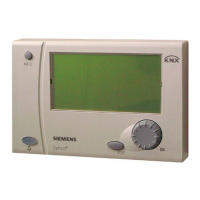RUGGEDCOM ROS
User Guide
Chapter 5
Setup and Configuration
VLAN Concepts 123
VLANs can be learned through GVRP. For more information about GVRP, refer to Section 5.2.1.8, “GARP
VLAN Registration Protocol (GVRP)”
For more information about VLANs, refer to Section 5.2.1, “VLAN Concepts”.
The following sections describe how to configure and manage VLANs:
• Section 5.2.1, “VLAN Concepts”
• Section 5.2.2, “Viewing a List of VLANs”
• Section 5.2.3, “Configuring VLANs Globally”
• Section 5.2.4, “Configuring VLANs for Specific Ethernet Ports”
• Section 5.2.5, “Managing Static VLANs”
Section 5.2.1
VLAN Concepts
The following sections describe some of the concepts important to the implementation of VLANs in ROS:
• Section 5.2.1.1, “Tagged vs. Untagged Frames”
• Section 5.2.1.2, “Native VLAN”
• Section 5.2.1.3, “The Management VLAN”
• Section 5.2.1.4, “Edge and Trunk Port Types”
• Section 5.2.1.5, “Ingress and Egress Rules”
• Section 5.2.1.6, “Forbidden Ports List”
• Section 5.2.1.7, “VLAN-Aware and VLAN-Unaware Modes”
• Section 5.2.1.8, “GARP VLAN Registration Protocol (GVRP)”
• Section 5.2.1.9, “PVLAN Edge”
• Section 5.2.1.10, “QinQ”
• Section 5.2.1.11, “VLAN Advantages”
Section 5.2.1.1
Tagged vs. Untagged Frames
VLAN tags identify frames as part of a VLAN network. When a switch receives a frame with a VLAN (or 802.1Q)
tag, the VLAN identifier (VID) is extracted and the frame is forwarded to other ports on the same VLAN.
When a frame does not contain a VLAN tag, or contains an 802.1p (prioritization) tag that only has prioritization
information and a VID of 0, it is considered an untagged frame.
Section 5.2.1.2
Native VLAN
Each port is assigned a native VLAN number, the Port VLAN ID (PVID). When an untagged frame ingresses a
port, it is associated with the port's native VLAN.

